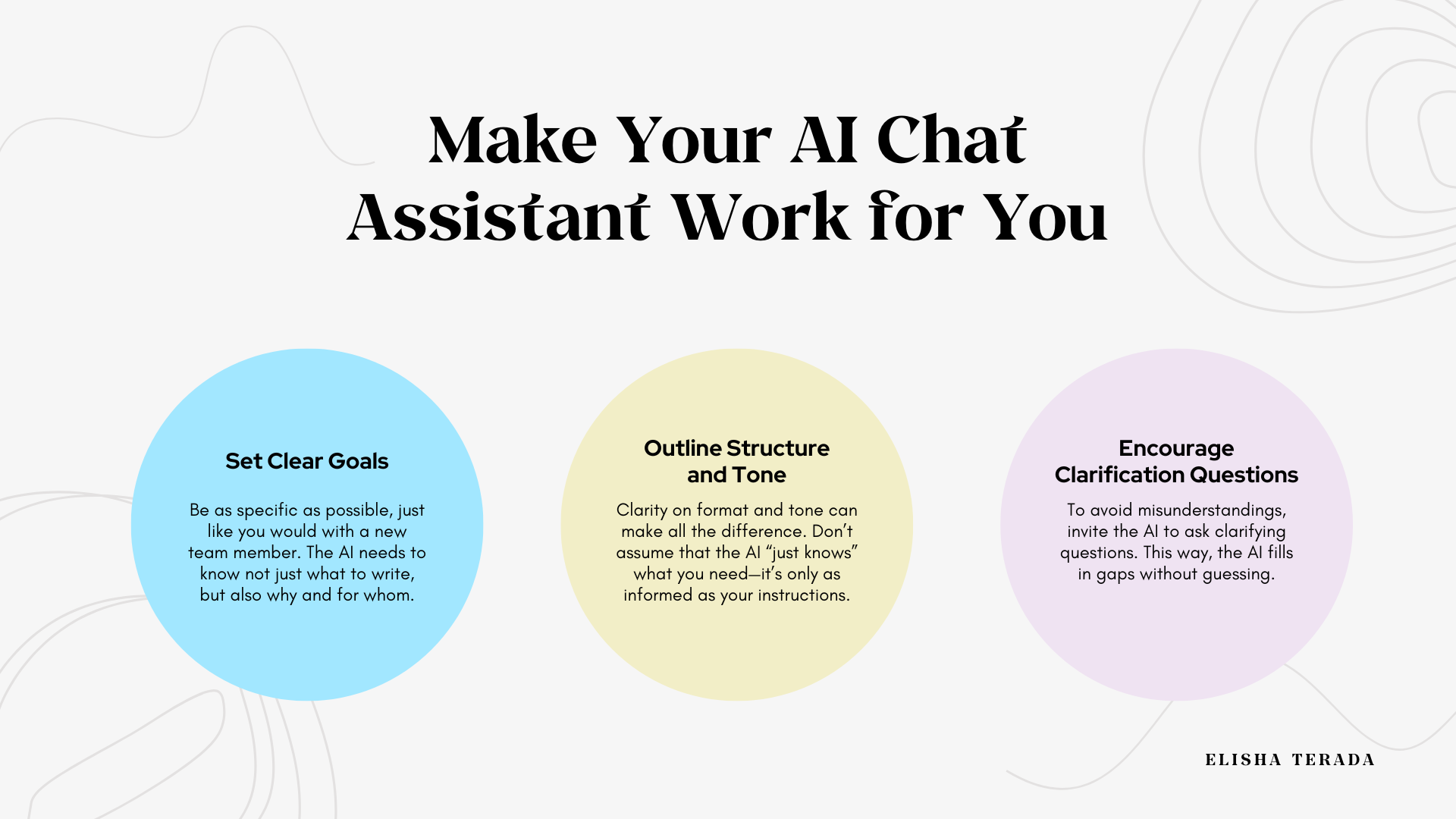Your AI Assistant Isn’t a Mind Reader – Here’s How to Guide It
AI isn’t a mind reader. Just like a real-world assistant, it needs clear, precise instructions to deliver exactly what you want. Learn the art of prompt engineering and start getting tailored, useful results every time.

Are you finding AI chat assistants a bit hit-or-miss? Many people enter AI conversations with high expectations, only to be disappointed by vague or off-target responses. Here’s the thing: just like a real-world assistant, AI can’t read your mind. To get the best results, you need to be clear, specific, and ready for a bit of back-and-forth.
Why Clear Instructions Matter
Imagine hiring a new assistant in your marketing department. If you simply say, “Write me a blog post about social media,” the assistant might return with something totally different from what you envisioned. AI works in the same way. Giving only broad instructions often leads to disappointing results, as the AI fills in gaps with its best guess.
To get outputs that really match your expectations, think about prompt engineering as a process of “training” your AI assistant. Here’s how to take charge and give directions that work.
3 Techniques to Make Your AI Chat Assistant Work for You
- Set Clear Goals Start by explaining the purpose of the task. Instead of “Write an email about our product,” try “Draft a customer introduction email for our new CRM tool. The email should be friendly, informative, and highlight time-saving benefits.” Be as specific as possible, just like you would with a new team member. The AI needs to know not just what to write, but also why and for whom.
- Outline Structure and Tone In sales and marketing especially, clarity on format and tone can make all the difference. Ask for a “casual, yet professional email,” or specify a structure like “Introduce the product, state three key benefits, then add a call to action.” This approach leads to a more tailored result than a general prompt ever could. Don’t assume that the AI “just knows” what you need—it’s only as informed as your instructions.
- Encourage Clarification Questions Many users assume their instructions are clear and complete, but small details often get lost. To avoid misunderstandings, invite the AI to ask clarifying questions. For instance, a prompt like, “Draft a sales email introducing our new tech product to small business owners. If more details are needed, ask” can lead to follow-up questions like “What’s the key differentiator of the product?” or “Should the tone be formal or casual?” This way, the AI fills in gaps without guessing.
Example in Action
In sales and marketing, assuming familiarity with terms or strategies can lead to mixed results. Take this example:
Instead of:
“Create a sales pitch for our new marketing software.”
Try:
“Draft a conversational sales pitch for our new marketing automation software aimed at small businesses. Highlight how it reduces time spent on email marketing by 50%. Ask any questions if further details are needed, like specific pain points for the audience.”
This small shift in approach prevents misunderstandings and gets you closer to what you had in mind.
Conclusion
Treating your AI assistant like a real team member, rather than a mind reader, changes the game. By clearly defining your goals, outlining specifics, and inviting questions, you’ll get outputs that actually reflect your vision.
What’s one prompt you’ve used recently that didn’t quite hit the mark? How could you tweak it to make it clearer?

Master the essentials of prompt engineering and harness AI to work smarter, not harder! Whether you're looking to boost your productivity or enhance your career, Prompt Engineering Foundations Course will help you communicate effectively with AI, automate workflows, and leverage tools like ChatGPT for real-world applications—all with practical, engaging demonstrations.
